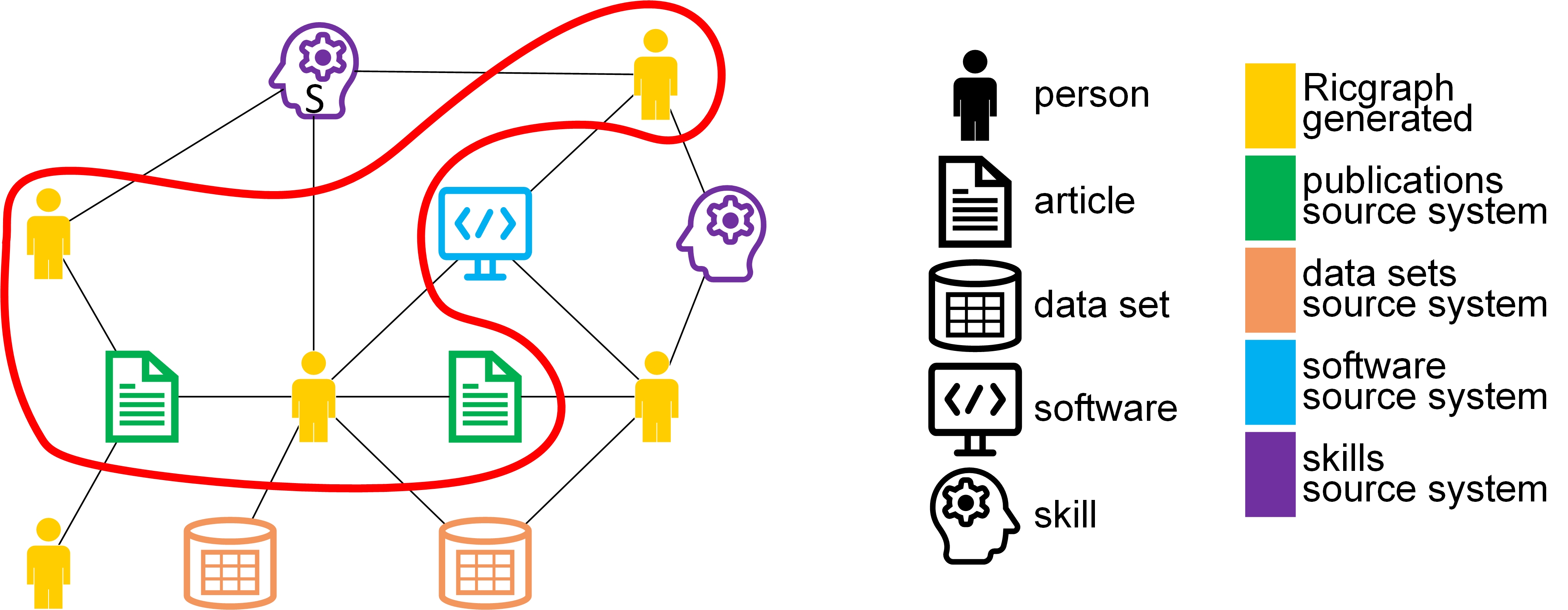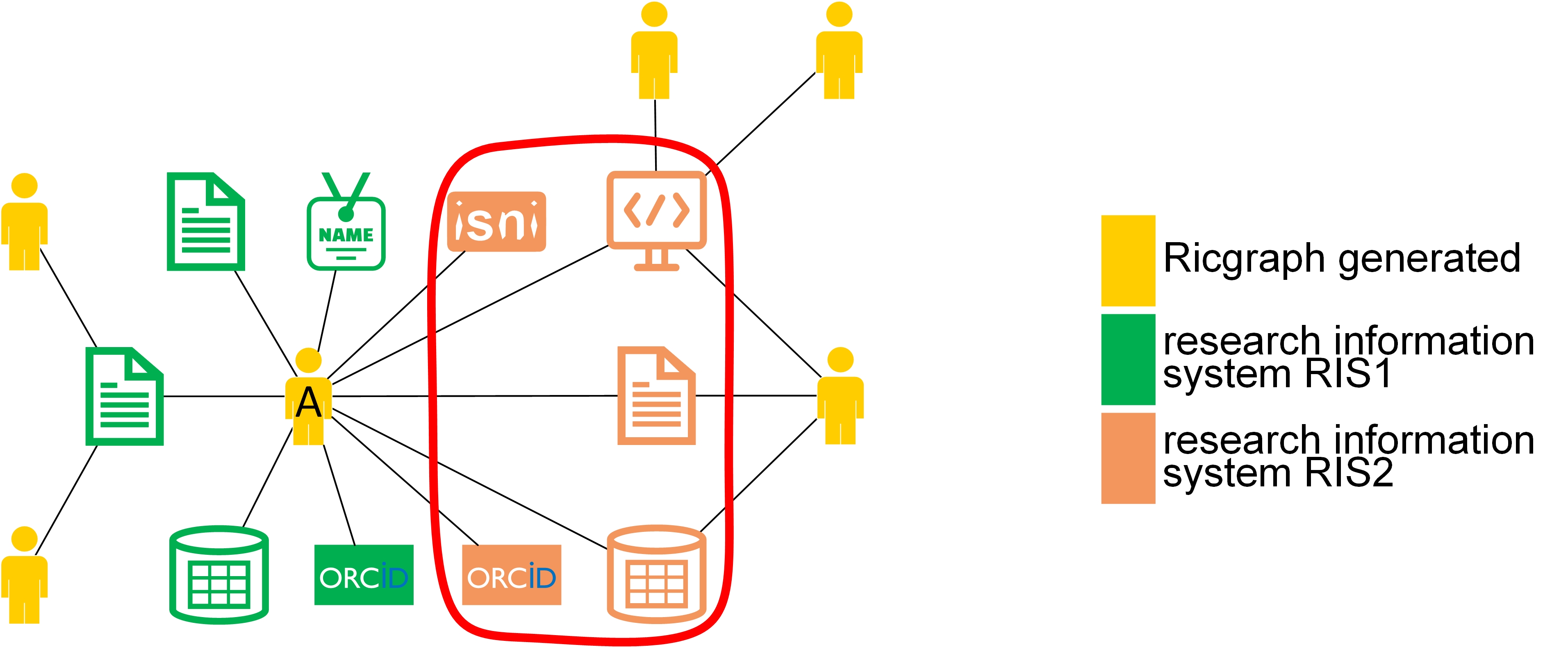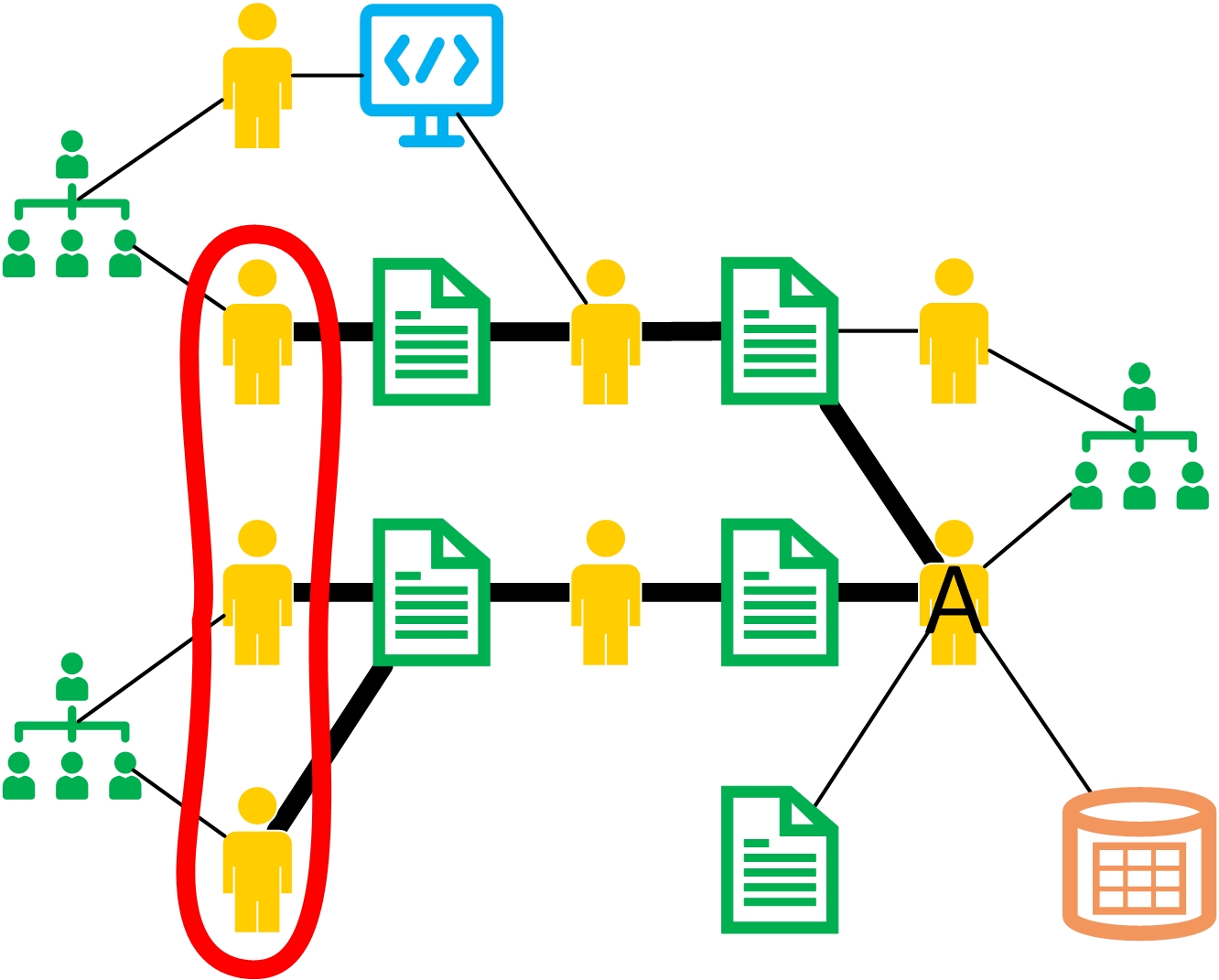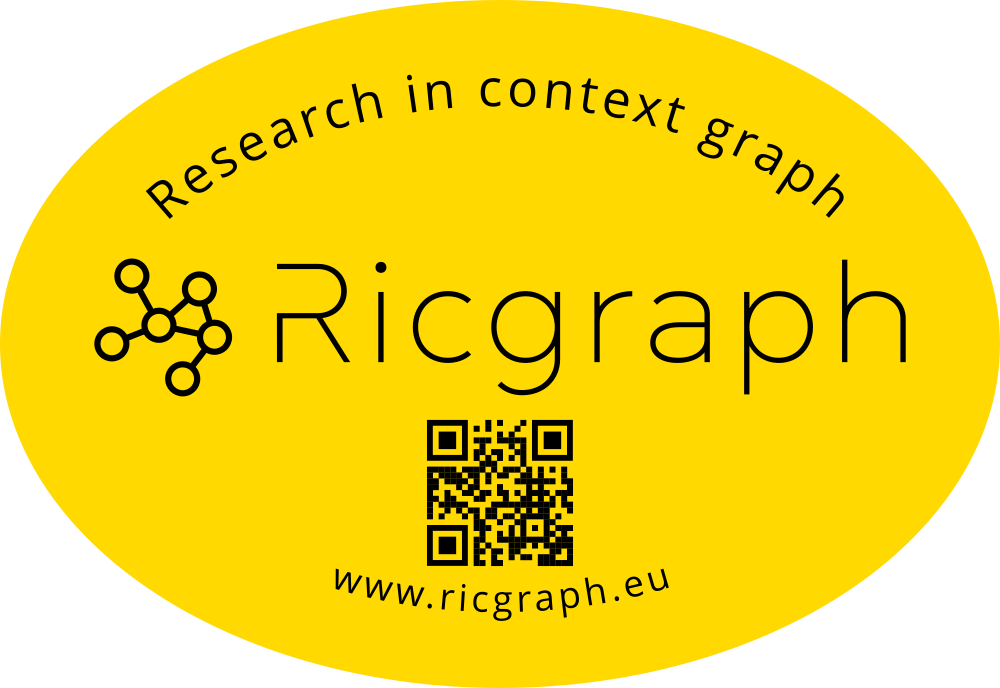Research in context graph, Ricgraph, Ricgraph Explorer, Ricgraph REST API, Data enrichment, Data harvesting, Data linking, Enrichment, Graph, Graph database, Harvest, Harvest data, Harvester, Knowledge graph, Linked data, Metadata, Utrecht University, Visualization
What is Ricgraph?
Ricgraph, also known as Research in context graph, enables the exploration of researchers, teams, their results, collaborations, skills, projects, and the relations between these items.
Ricgraph can store many types of items into a single graph. These items can be obtained from various systems and from multiple organizations. Ricgraph facilitates reasoning about these items because it infers new relations between items, relations that are not present in any of the separate source systems. It is flexible and extensible, and can be adapted to new application areas.
Throughout this documentation, we illustrate how Ricgraph works by applying it to the application area research information.
Ricgraph news
Read my recent preprint:
- Rik D.T. Janssen (2025). Utilizing Ricgraph to gain insights into research collaborations across institutions, at every organizational level. Submitted to SoftwareX [preprint]. https://doi.org/10.2139/ssrn.5524439.
See Ricgraph in action:
- Use the Open Ricgraph demo server via https://explorer.ricgraph.eu. Read more (and join) at pilot project Open Ricgraph demo server.
Currently, there are people working on the following extensions for Ricgraph:
- BackToPure is a tool designed to enhance an organization’s Research Information System Pure by enriching its content. BackToPure can identify items (such as publications, data sets or software) that exist in other external sources but are missing from the organization’s Pure, and then insert (enrich) those items into Pure. The result is a more complete overview of research at that organization. Status: experimental stage (beta).
- A chatbot that allows you to “talk” to Ricgraph. You can formulate questions in plain English, such as “Please give me the research results of the Geosciences faculty of Utrecht University?” or “With what organizations does that faculty collaborate?”. It uses a local Large Language Model. Status: planning stage (pre-alpha).
- A project with six students from the University of Applied Sciences, Utrecht, that aims to create a general harvester for Ricgraph. It will remove a lot of code duplication in the harvest scripts, and will make it easier to add new harvest sources. Status: planning stage (pre-alpha).
- A project with a student from the University of Applied Sciences, Utrecht, that aims to use AI and Large Language Models to find topics and visualize large amounts of research information. It assigns topics to publications, data sets, and software. By selecting a number of topics, research results are grouped, and possibly experts on these topics can be found. Status: planning stage (pre-alpha).
- A tool that helps Pure administrators to clean up “external organizations” in Pure. Status: planning stage (pre-alpha).
Motivation
Ricgraph is software that is about relations between items. These items can be collected from various source systems and from multiple organizations. We explain how Ricgraph works by applying it to the application area research information. We show the insights that can be obtained by combining information from various source systems, insight arising from new relations that are not present in each separate source system.
Research information is about anything related to research: research results, the persons in a research team, their collaborations, their skills, projects in which they have participated, as well as the relations between these entities. Examples of research results are publications, data sets, and software.
These following sections show three use cases that use different types of information (called items): researchers, skills, publications, etc. Most often, these types of information are not stored in one system, so the use cases may be difficult or time-consuming to answer. However, by using Ricgraph, these use cases (and many others) are easy to answer.
Although the following text illustrates Ricgraph in the application area research information, the principle “relations between items from various source systems” is general, so Ricgraph can be used in other application areas.
Use case for a journalist
As a journalist, I want to find researchers with a certain skill S and their publications, so that I can interview them for a newspaper article. Example skills can be: climate change or stem cells. The items surrounded by the red line are the solution to this use case.
Use case for a librarian
As a librarian, I want to enrich my local research information system with research results from person A that are in other systems (in orange, RIS2) but not in ours (in green, RIS1), so that we have a more complete view of research at our university. The items surrounded by the red line are the solution to this use case.
Use case for a researcher
As a researcher A, I want to find researchers from other universities that have co-authored publications written by the co-authors of my own publications, so that I can read their publications to find out if we share common research interests. The items surrounded by the red line are the solution to this use case.
Main contributions of Ricgraph
- Ricgraph can store many types of items in a single graph.
- Ricgraph harvests multiple source systems into a single graph.
- Ricgraph Explorer is the exploration tool for Ricgraph.
- Ricgraph facilitates reasoning about items because it infers new relations between items.
- Ricgraph can be tailored for an application area.
Next steps
You might want to continue reading at Learn more about Ricgraph, to Read more about Ricgraph, or to Get Ricgraph. Starting around mid-September, you can see Ricgraph in action with the pilot project Open Ricgraph demo server.
















